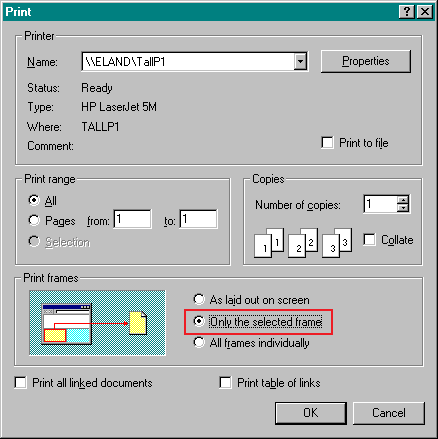Having checked the hardware side of things, let's now move on to look at the software. You may find it helpful to print this section out, using the following link. (This file is also available from the Resources section in Session 3.)
Your World Wide Web Browser
In order to read this file you will be using a Web browser. Your current Web browser will have information about itself, which you should be able to locate either when it opens or by clicking on the Help > About option in the menu bar at the top of the browser window.
The two most common Web browsers are Netscape Navigator and Internet Explorer. We recommend Internet Explorer version 5 or later in order to be sure that all parts of our course work as they should. The minimum version of Netscape Navigator is version 4.
If you are using a very old version of either Netscape Navigator or Internet Explorer you can download a newer version of the Web browser software, without charge, by following the instructions on either the Netscape or Microsoft Web sites.
Netscape NavigatorMicrosoft Internet ExplorerBrowser Plug-ins
Plug-ins are software programs that extend the capabilities of your Web browser so that you can view different types of media in your browser window. Listed below are the plug-ins you will need in order to handle the various types of resources used in this course. They are all "freeware" programs, which means you can download them from the Internet without charge.
1. Adobe Acrobat Reader
Adobe Acrobat Reader allows you to view and print documents produced in Adobe Portable Document Format (PDF). You will need Adobe Acrobat Reader version 4 or later to access the PDF documents used in this course. Follow the instructions below to check if you already have the plug-in installed on your computer:
- Click on the link: Study skills advice pdf
- Observe what happens.
What happened?
- You saw the information with no problems. Fine! You already have Acrobat Reader installed and don't need to do anything.
- You saw some sort of complaint about the version of Acrobat Reader you have. That means you need to update to a more recent version. You can download the latest version of Acrobat Reader from the Adobe Web site.
- You saw a complaint about not being able to handle documents of this type. You'll need to download Acrobat Reader from the Adobe Web site.
Adobe Acrobat Reader2. Macromedia Flash
To view the animations within the course, you will need Flash 6 from Macromedia. To check whether you have this plug-in, click on the link below:
Flash testAfter clicking on the link to the Flash test, what happened?
- You clicked on the 'play' button and then saw an audiographic with animation and sound. Good. You can handle our audiographics and animations and don't need to do anything else.
- The Flash animation played, but it failed to play the sound. This means you probably have an earlier version of Flash. You'll need to download the latest version from Macromedia.
- You saw a blank window, or your browser asked you if you wanted to download the plug-in. Download the plug-in from Macromedia.
Macromedia Web siteOnce you have installed the plug-in, return to this page and try using the Flash test again. If you can see animation and can hear sound, you'll be ready to view audiographic presentations.
3. Real Player
This course makes use of video files, and you will need to have the latest version of Real Player installed on your computer so that you can access these files. To test if you have the correct version of Real Player, click on the following link:
Real Player testIf you saw a small pop-up window and were able to hear a tone, then you have already got Real Player on your computer.
If you received any error message, then you will need to download the latest version of Real Player from the Real Player Web site.
Real Player Web sitePlease note that 'RealOne Player' is the free version of the software and will do everything required to play the video on this course. So avoid the links to download and purchase 'RealOne Player Plus' or 'RealOne SuperPass', unless you think you really need the extra features.
Once you have installed the plug-in, return to this page and try using the Real Player test again. If you see animation and hear sound, you'll be ready to view the video files. Please note, however, that if after clicking on a video clip link within the course, the Web page goes blank, click your browser's 'back' button to return to the page.
